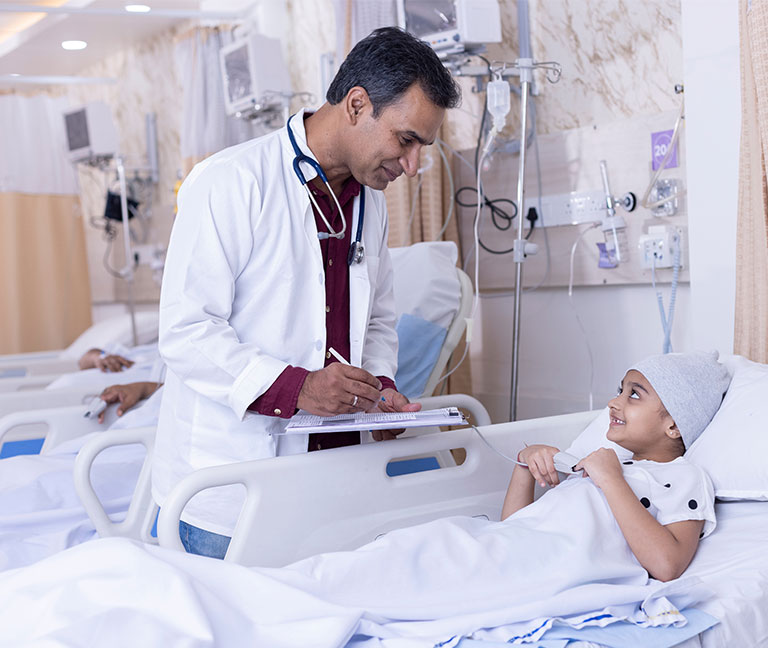Understanding Cardiac Emergencies
Cardiac emergencies include a range of serious conditions that can abruptly endanger an individual's life. The most critical and immediate concerns among these emergencies are heart attacks and sudden cardiac arrest, which require immediate attention and quick response.
Heart attacks, also known as myocardial infarctions in medicine, occur when the blood supply to the heart is significantly reduced or completely blocked, causing damage to the heart muscle tissue.
Sudden cardiac arrest, on the other hand, occurs when the heart's electrical system malfunctions, resulting in an abrupt cessation of its pumping function. Recognising the urgency of these conditions and understanding how to effectively manage them are critical skills that can make a significant difference in saving lives.
In this blog, we will delve into the different types of cardiac emergencies, explore the symptoms of cardiac arrest, and outline the essential steps for its prompt and effective management and treatment.
Types of Cardiac Emergencies
It is important to raise awareness about cardiac emergencies, as they can affect anyone, regardless of age or gender. By understanding the signs and symptoms of cardiac emergencies, as well as knowing how to respond effectively, we can be better prepared to act swiftly in critical situations. Now, let's delve into the details of each type of cardiac emergency, starting with the heart attack.
Heart Attack
Symptoms: Central chest pain or discomfort that persists, pain spreading to the left arm, neck, jaw, back, or stomach, unconsciousness, or seizures.
Management: If someone displays symptoms of a heart attack, immediate action is crucial. Call emergency medical helplines right away and request an ambulance. While waiting for medical assistance, help the person sit down and rest. If the individual is not allergic to aspirin, provide them with a 300 mg aspirin tablet to chew.
Sudden Cardiac Arrest
Symptoms: Abrupt loss of responsiveness, absence of normal breathing.
Management: If you suspect someone is experiencing cardiac arrest and you have received training as a lay rescuer, ensure the safety of the surroundings. Check for a response and call for help. Instruct someone nearby to contact the local medical emergency response number and, if available, ask the emergency service to bring an automated external defibrillator (AED).
If you are alone with an adult displaying signs of cardiac arrest, call the local medical emergency response number and, if possible, locate an AED. If an AED is unavailable, perform CPR with chest compressions and rescue breaths.
Acute Decompensated Heart Failure
Symptoms: Breathlessness, fatigue, swelling in the legs and ankles, rapid or irregular heartbeat, persistent cough or wheezing with white or pink phlegm, increased urination at night, sudden weight gain due to fluid retention.
Management: Treating acute decompensated heart failure may involve medications to eliminate excess fluid, improve heart function, and alleviate symptoms. In severe cases, hospitalization may be necessary. If a patient experiences any of these symptoms, it is important to seek medical attention promptly and consult a doctor.
Symptoms of Cardiac Arrest
Recognizing the symptoms of cardiac arrest is crucial for timely medical intervention. The signs and symptoms of cardiac arrest may include:
Sudden Loss of Consciousness: The person may collapse suddenly and lose consciousness without any warning. .
Absence of Pulse: Check for the presence of a pulse in the carotid artery (neck) or the radial artery (wrist). In cardiac arrest, the pulse is usually absent or extremely weak.
Absence of Breathing or Abnormal Gasping: The person may not be breathing or exhibit agonal gasps, which are slow, abnormal breaths.
Also read: Heart Failure Treatment
How to Care for Someone in a Cardiac Emergency?
If you suspect someone is experiencing a cardiac emergency, act quickly and seek medical attention. Here are some things you can do to help someone in a cardiac emergency:
Call Emergency Services: Immediately dial the emergency number in your country to notify the emergency medical services (EMS). Provide precise details about the situation, including the person's condition and location.
Start CPR: Cardiopulmonary resuscitation (CPR) is a vital intervention that helps maintain blood flow to vital organs until professional medical help arrives. Begin by performing chest compressions at a rate of 100-120 compressions per minute and delivering rescue breaths if you are trained to do so.
Use an Automated External Defibrillator (AED): If available, an AED (Automated External Defibrillator) can be used to analyze the person's heart rhythm and deliver an electric shock if necessary. Follow the instructions provided by the AED until medical professionals arrive.
Advanced Medical Care: Once the EMS personnel arrive, they will take over the resuscitation efforts. They can administer medications, provide advanced life support, and transport the individual to the nearest hospital for further treatment.
Cardiac emergencies, particularly sudden cardiac arrest, require immediate attention and action. Recognizing the symptoms of cardiac arrest, calling emergency services, initiating CPR, and utilizing an Automated External Defibrillator (AED) can significantly improve the chances of survival until professional help arrives. By raising awareness about cardiac emergencies and ensuring timely intervention, a life can be saved and reduce the devastating impact of these conditions. Remember, every second counts in a cardiac emergency.
Your Aster DM Team
At Aster DM our team of heart doctors are trained and dedicated to providing exceptional care and treatment for individuals experiencing cardiac emergencies. They understand the urgency and gravity of cardiac emergencies, and strive to deliver prompt and effective medical attention to ensure the best possible outcomes for patients.





